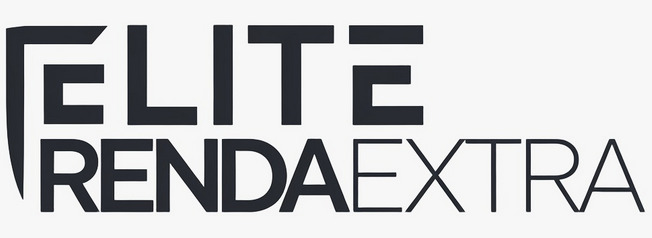Navigating the world of personal finance often involves considering various borrowing options. When unexpected expenses arise, or when planning a significant purchase or project, a personal loan can seem like a viable solution for many individuals across the United States.
However, the landscape of lenders and loan products is vast and varied. Understanding how to effectively compare personal loan rates and lenders online is a crucial step towards making a sound financial decision that aligns with your specific needs and circumstances.
What Exactly is a Personal Loan?
A personal loan is typically an unsecured loan, meaning it doesn’t require collateral like a house or car. Borrowers receive a lump sum of money upfront and agree to repay it, plus interest and any applicable fees, in fixed monthly installments over a predetermined period (the loan term). The funds from a personal loan can often be used for a wide range of purposes.
Common uses include:
- Consolidating higher-interest debts (like credit cards)
- Financing home improvements or repairs
- Covering medical bills or emergency expenses
- Paying for large purchases or events (like weddings)
- Addressing temporary cash flow gaps
Because they are often unsecured and versatile, the terms offered can differ significantly from one lender to another.
Why Comparing Personal Loan Options is Essential
Taking the time to compare offers from different lenders isn’t just a suggestion; it’s a financially prudent step. The rates, fees, and terms you secure can have a substantial impact on both your monthly budget and the total amount you repay over the life of the loan. Even seemingly small differences in the Annual Percentage Rate (APR) can translate into significant savings.
Comparing allows you to:
- Identify Lower Interest Rates: Find lenders offering more competitive APRs based on your credit profile.
- Understand Fee Structures: Uncover potential costs like origination fees, late payment fees, or prepayment penalties.
- Find Suitable Repayment Terms: Select a loan duration that results in affordable monthly payments without excessive interest costs.
- Assess Lender Legitimacy: Gauge the reputation and reliability of different financial institutions.
- Increase Approval Odds: Understand varying eligibility criteria across lenders.
Without comparison, you might inadvertently accept an offer that is far less favorable than others you could have qualified for.
Key Factors to Compare When Evaluating Lenders and Rates
When looking at personal loan options online, focus on these critical elements:
Interest Rates (APR)
The Annual Percentage Rate (APR) is one of the most important comparison points. It represents the true annual cost of borrowing, including the interest rate and certain fees expressed as a percentage. Be sure to distinguish between a nominal interest rate and the APR. Also, understand if the rate offered is fixed (stays the same for the loan term) or variable (can fluctuate based on market conditions).
Loan Amounts
Lenders offer different minimum and maximum loan amounts. Ensure the lenders you consider provide amounts that fit your borrowing needs. Borrowing too little might not solve your problem, while borrowing too much can lead to unnecessary debt and interest payments.
Repayment Terms
The loan term is the length of time you have to repay the loan, typically ranging from 1 to 7 years. Shorter terms mean higher monthly payments but less total interest paid. Longer terms result in lower monthly payments but more interest paid over the life of the loan. Choose a term that balances affordability with the total cost.
Fees
Look closely at the fee schedule. Common fees include:
- Origination Fees: Charged by some lenders for processing the loan, often deducted from the loan proceeds.
- Late Payment Fees: Penalties for missing a payment due date.
- Prepayment Penalties: Fees charged if you pay off the loan early (less common now, but still exist).
- Insufficient Funds (NSF) Fees: Charged if a payment bounces.
These fees can significantly increase the overall cost of borrowing.
Lender Reputation and Customer Reviews
Research the lender’s reputation. Look for reviews from other borrowers, check ratings with the Better Business Bureau (BBB), and see if there are complaints filed with the Consumer Financial Protection Bureau (CFPB). A reputable lender will be transparent and offer good customer support.
Eligibility Requirements
Lenders have different criteria for approval. Key factors usually include:
- Credit Score: Minimum score requirements vary significantly.
- Income: Proof of stable income is typically required.
- Debt-to-Income Ratio (DTI): Lenders assess your existing debt relative to your income.
- Credit History: Overall creditworthiness and payment history matter.
Understanding these requirements beforehand can save you time and effort.
Types of Lenders in the US Personal Loan Market
Personal loans are available from various sources in the US:
- Traditional Banks: Large national banks and smaller community banks often offer personal loans, potentially with relationship benefits for existing customers.
- Credit Unions: Member-owned cooperatives that may offer competitive rates and more personalized service, particularly if you meet membership criteria.
- Online Lenders (Fintech): These digital-first companies often provide streamlined online applications, fast funding decisions, and competitive rates, catering to a wide range of credit profiles.
Each type has its own application process, underwriting criteria, and potential advantages.
Understanding Your Credit Score’s Role
Your credit score is a critical factor in the personal loan comparison process. Lenders use it to gauge your creditworthiness – essentially, the risk associated with lending you money. Generally, a higher credit score indicates lower risk, which often translates to:
- Higher chances of loan approval.
- Access to lower interest rates (APRs).
- More favorable loan terms.
- Qualification for larger loan amounts.
Knowing your credit score before you start comparing can give you a realistic idea of the types of rates and terms you might expect.
The Process of Comparing Online
Comparing personal loans online often involves using comparison platforms or visiting individual lender websites. Many lenders offer a pre-qualification process. This typically involves providing basic financial information and allows the lender to check your potential eligibility and estimated rates using a soft credit inquiry, which generally doesn’t impact your credit score. Pre-qualification helps you gather multiple potential offers without formally applying yet.
Once you have several pre-qualified offers, you can compare the APRs, terms, and fees side-by-side. Remember that pre-qualified offers are estimates; the final terms are confirmed only after a formal application and a hard credit check.
Making an Informed Decision
Choosing the right personal loan requires careful consideration beyond just the lowest advertised rate. Read all loan agreements thoroughly before signing. Ensure you understand the repayment schedule, all associated fees, and the total cost of the loan. Consider your budget and be confident you can comfortably afford the monthly payments for the entire loan term.
Comparing US personal loan rates and lenders online empowers you to find financing solutions that genuinely fit your financial situation. Diligence during the comparison phase is key to securing a loan that helps you achieve your goals without creating undue financial strain.



